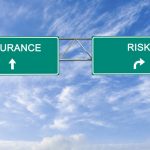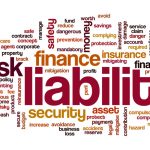Public Liability insurance is usually the one basic cover that every small business will be advised to take out, regardless of the type or the size of the operation.
It is the fundamental protection that any business needs because just by being in business and offering your goods or services to customers, you have taken upon yourself some risk.
What Are You Looking For?
Choose and Get Your Free Quote:👇️
General Liability Insurance ->
Professional Liability ->
Product Liability Insurance ->
Commercial Auto ->
Workers Compensation ->
Commercial Property ->
Other Business Insurance ->
Public Liability insurance offers protection in case you are sued by someone alleging that some accident happened causing them damage, injury or loss.
How does your business come to have a liability?
In the simplest terms, liability means an obligation to pay In accounting, it represents some form of debt.
For example, when your business borrows money from a lender, or goes into overdraft at the bank, the amount that is owed is a liability and you have a duty to see to it that the amount is repaid. A business must have more assets than liabilities, otherwise it’s not viable.
When talking about liability in insurance terms, it means that by being in business you have agreed to take on a degree of risk in case some accident happens and a court decides that you were responsible.
For your business to be viable, you need to have some way of balancing those liabilities in some way, which in this case means you either have to have lots of surplus cash available in the event that something goes wrong, or you need to have insurance, which takes over the liability on your behalf.
Who needs Public Liability insurance?
Public liability insurance is meant to cover you for any claims of personal injuries to members of the public – even accidental death, as well as for loss or damage to someone else’s property.
Wherever you come into contact or interact with the general public in the conduct of your business, this comes with risks.
It’s not restricted to commercial interactions.
For example, if you have an open door that any passerby can walk through into your premises, and that person slips and falls, you could end up with a lawsuit alleging negligence.
By being in business, you have to take due care to make sure that you will protect anyone who comes into your domain from bodily injuries or property damage resulting from your products, services or operations.
The important feature is that this duty does not arise only from how you conduct business, but can even extend to accidental damage or injury to people who are not customers.
A typical example is given in the section further down.
What does Public Liability insurance cover?
Public liability insurance policies usually cover the following:
- For bodily injury, the policy covers the medical expenses of anyone who is injured on your property. This can include hospitalization, rehabilitation, pain, emotional stress, loss of income while off work – it’s a very broad definition and courts can award substantial amounts, even more than was actually claimed!
- For property damage, the policy covers damage to something owned by a third party, either through accident or negligence. An example could be if you knock over a cup of hot coffee while talking to a customer and it ruins her dress and shoes. In such a case, in addition to any injury claim, any repair or replacement of the dress and shoes would be at your expense and your policy should help recover the cost.
- In any instance of a person making a claim that has to be settled in a court, the policy should cover any costs related to hiring and paying a lawyer to represent you and your business, including in negotiating a settlement.
Injuries to your employees are not covered by public liability insurance, but rather fall under workers compensation insurance.
What is a real-life example of a public liability claim?
Slip-and-fall cases are one of the most common examples of public liability claims.
In one example, a hairstylist regularly cleaned the foyer and work area of her shop, but the warning sign giving notice of danger that she had attached to the wall at the start of operations had become obscured and wasn’t clearly visible to people stepping in from outside.
A person walked into the salon to enquire about the address of a different business, slipped and fell, breaking her ankle.
That person then claimed negligence and sued for damages, pain, suffering, lost income and medical costs.
The owner claimed that because this person had simply walked in, the salon had no duty of care since the injured person had not been invited inside, nor was she a customer.
However, the law is quite clear that liability extends to anyone who is injured, or any property that is damaged, inside the business domain as long as there is public access.
In this case, the salon owner lost the case and had to pay all of the amount awarded, plus her own and the other party’s legal costs.
If she had taken out the necessary public liability insurance before starting business, all of these expenses would have been borne by the insurance company, for a premium that was barely a fraction of what she ended up paying.
How much Public Liability should you have, and what will it cost?
The main thing to consider when deciding what level of cover you need is how much risk your business is generating.
Clearly, this depends on many things, like the level of business, the physical location and the level of traffic, and the nature of your business.
In almost all small businesses that deal directly with the public on-site, a minimum Public Liability cover of $1 million for a single incident is advisable, with total cover for the year at minimum $2 million.
It is certainly worth your while to talk to your bank, professional advisers or accountant to get some expert advice.
The premium you can expect to pay for this insurance will depend on your own claims history, the type of business, and the volume of people coming into your location.
Unless your type of business is classified as hazardous, with a high-risk for possible injury, such as for example a metal fabrication or carpentry workshop, generally you can expect to pay around $1,100 per year for a $1 million/$2 million cover.
The hazardous businesses have the most expensive rates, averaging $1800 for the lower cover.
For a new business, rates could be a bit higher, until you have built up a claims history and started to earn some renewal discounts.
FAQ
Does public liability insurance cover you in case gross negligence is alleged?
Gross negligence is a specific legal term, not to be confused with carelessness.
It defines an action or omission that was made in extreme disregard for the safety of others when a reasonable duty of care is owed.
In the context of insurance, it is common for public liability insurance policies to exclude coverage of gross negligence. Make sure to read the terms of your policy so that you understand exactly how this is defined.
Does the insurance company have to act on your behalf in a court case?
By having a proper public liability insurance policy, you are not only protecting your business in case someone claims that you are responsible for some injury or damage to them or their property, but you are also removing the responsibility for defending yourself in case it comes to court.
There is a law that says that the insurance company has a duty to defend you.
Even if there is some dispute about whether or not your policy covers you in this instance, the insurer still has to conduct the defense.
Are all Public Liability policies covering the same risks at the same rates?
Insurance companies set their policy terms and rates by calculating their own risks using data about past occurrences and then use probabilities to predict whether future losses will be higher, lower or the same as those that occurred previously.
The majority of insurers are relatively small and can’t generate enough data on their own to make accurate predictions about future claims.
They use a service that pools the data across the whole industry and so they mostly calculate terms, conditions and prices for universal risks like public liability on the same basis.
For this reason, most public liability policies offer very similar conditions and clauses, and the premium rates are usually very similar.
This is important for any small business because if you are being offered public liability cover at a price that is significantly different from the average, then you should take extra care – either you are being exploited if the premium is too high, or perhaps there are conditions and clauses in your policy that will leave you significantly exposed to risks in case the premium is too low. It’s always a good idea to do some comparative shopping online, or to talk to more than one professional insurance broker so that you have some way of judging how good your policy really is.
Is liability always decided as 100% for or against?
In the past, insurance cases could be decided against plaintiffs even if they contributed in just a small way in causing the accident.
This is known as contributory negligence.
In most states, this has been abolished and replaced by a comparative negligence approach.
Some of the states that still apply contributory negligence are Alabama, Maryland, and Virginia.
Comparative negligence applies when both parties are at least somewhat at fault.
In a situation where both the plaintiff and the defendant were negligent, the jury allocates fault, usually as a percentage.
In our above example, the defendant had to pay all of the plaintiff’s claim, plus costs, because the defendant was found to be wholly at fault.
If the warning sign had been partially visible, but the plaintiff had simply not bothered to look properly, then the court might have rejected the claim, but the defendant would have had to pay her own costs.
In such a case, the public liability policy picks up these costs.
















